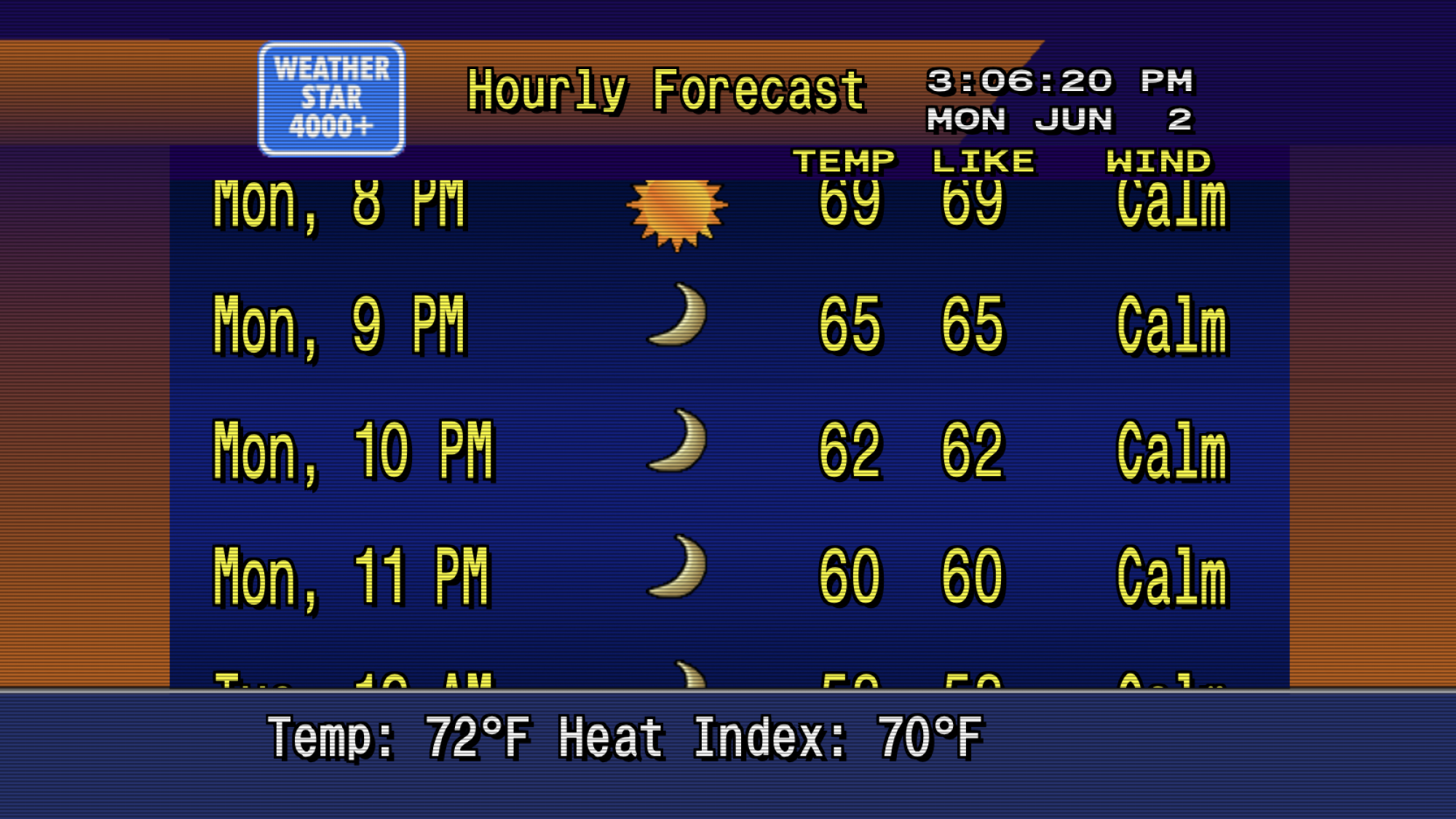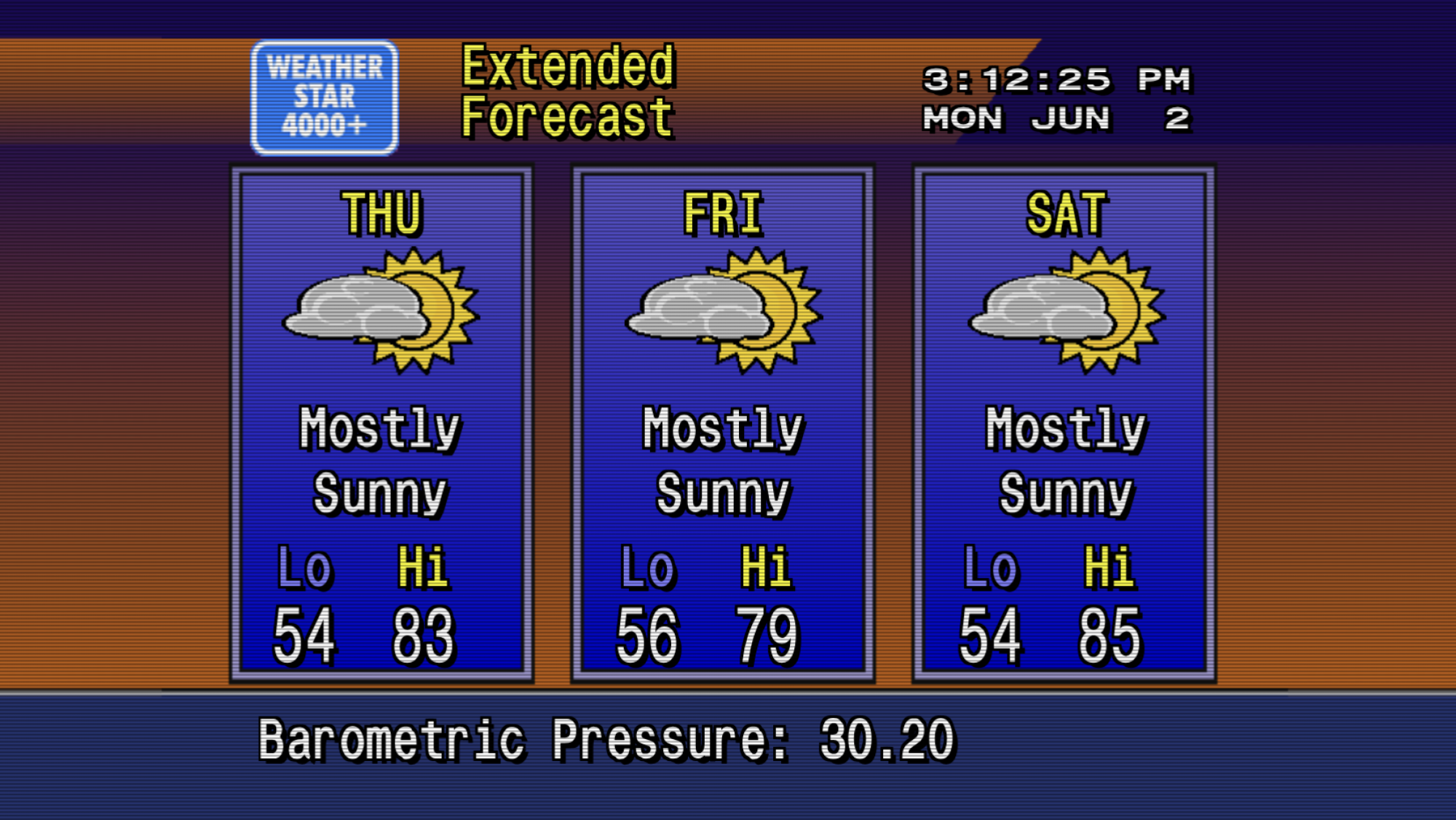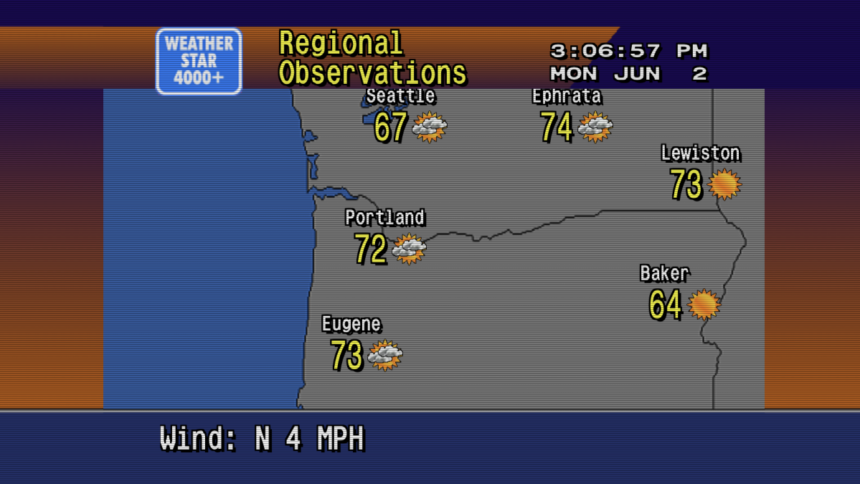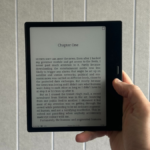Rediscover Vintage Weather Forecasts with WeatherStar 4000
At first glance, The Weather Channel seemed like an ordinary television network, but it transformed into a colorful display of data when the local weather segment aired. Accompanied by a quirky piano melody, it presented a unique aesthetic that hasn’t been replicated elsewhere—until now.
Introducing WeatherStar 4000, a complimentary platform that captures the essence of classic Weather Channel forecasts. This site offers authentic visuals, complete with optional CRT scanlines, and a nostalgic low-fi funk soundtrack, perfect for relaxation or studying.
To use the site, simply visit and select your preferred features using the checkboxes provided. Once you’ve made your choices, click the fullscreen icon located in the bottom-right corner. Don’t forget to unmute the music for the full experience. One user mentioned that this site will permanently occupy his second monitor, and it’s hard to blame him.
This project comes from programmer Matt Walsh, who designed it as an evolution of a previous endeavor focused on faithfully recreating the retro format. New features include a scrolling hourly forecast and widescreen support, enhancing the experience.

This website is delightful. While it may not replace conventional weather apps, it serves as a charming homage to a technological era that made cable television essential for many. During the 90s, obtaining an accurate local weather report was challenging. Newspapers provided forecasts that were often outdated and local television updates aired infrequently.
The Weather Channel changed that dynamic. It combined national programming with locally generated forecasts, which aired every ten minutes at eight minutes past the hour, a segment aptly named Local On The 8s. This format allowed viewers to turn on their TVs whenever they saw an “8” on their clock to access timely and localized weather updates.

But how was this achieved? Producing countless distinct broadcasts with unique local forecasts for cable providers would have been financially unfeasible for The Weather Channel. Instead, the network provided cable companies with a specialized computer, known as the WeatherStar. This device received textual forecast information and transformed it into the memorable pixelated video forecasts that many recall. This represented an innovative, automated method to deliver timely local weather updates.
The homage in the name WeatherStar 4000+ is significant, paying tribute to this groundbreaking device. It’s highly recommended to visit the site, crank up the music, and immerse oneself in the experience for a while. There are certainly less constructive ways to spend time online today.












